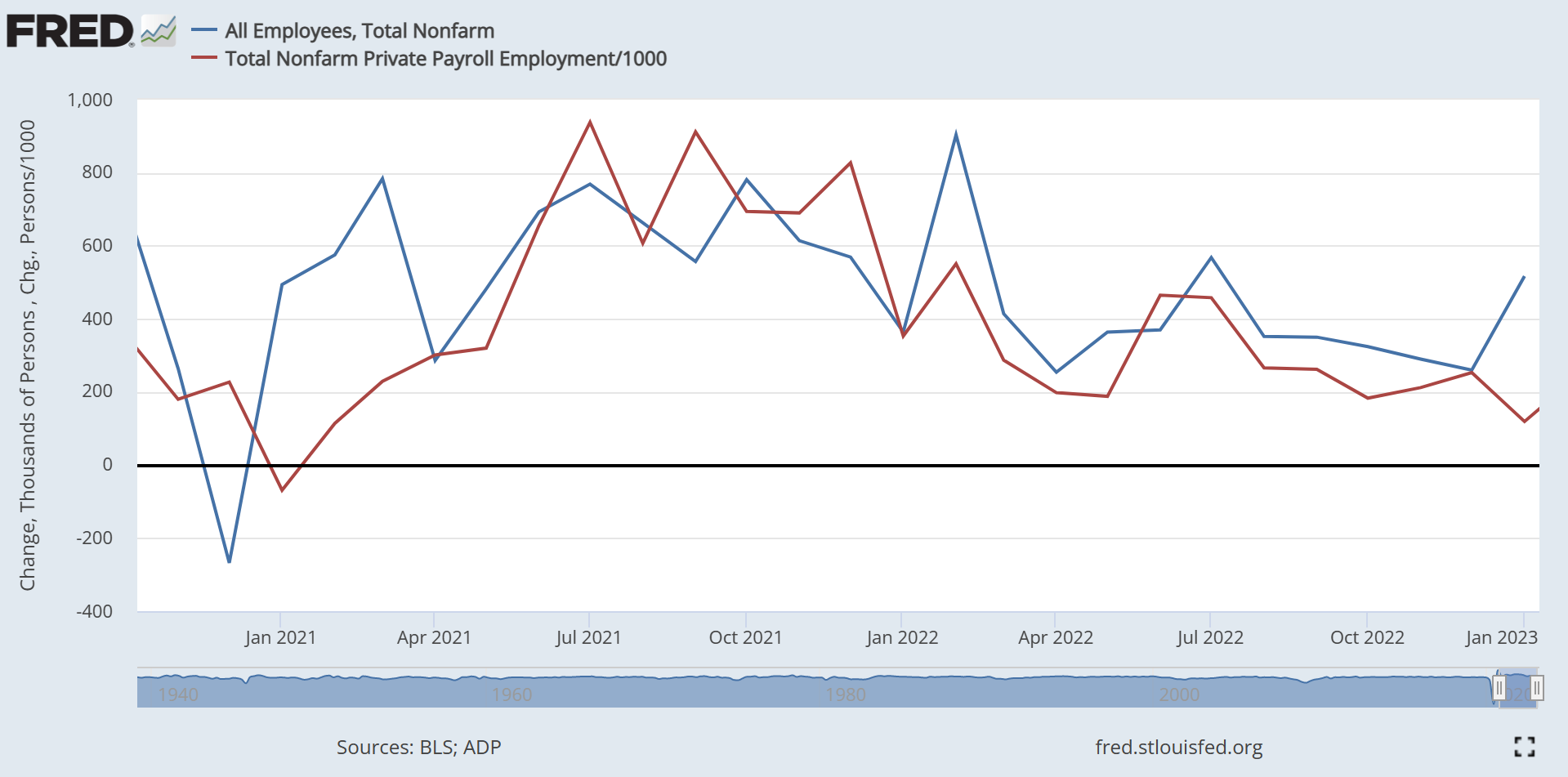Stocks traded flat this morning following yesterday’s big selloff. The Dow fell while the Nasdaq Composite gained slightly and the S&P refused to budge. Stronger-than-expected private payroll data gave investors pause with the official February jobs report approaching on Friday.
ADP’s employment report, revealed this morning, showed an increase of 242,000 payrolls (vs. 200,000 expected) last month. ADP also revised January’s print higher.
Small businesses, which employ less than 49 employees, lost 61,000 jobs in February. Mid-sized companies (50-499 employees) gained 148,000 and large companies (500 employees+) added 160,000 payrolls to ADP’s data. Hourly wage growth slowed to 7.2% percent year-over-year (YoY) for “job stayers” while “job changers” saw pay growth slow, too, falling from 14.9% YoY in January to 14.3% YoY in February.
“There is a tradeoff in the labor market right now. We’re seeing robust hiring, which is good for the economy and workers, but pay growth remains quite elevated. The modest slowdown in pay increases, on its own, is unlikely to drive down inflation rapidly in the near-term,” said ADP’s chief economist Nela Richardson.

ADP data (red) vs. BLS data (blue)
So, what does this mean for the upcoming official tally from the Bureau of Labor Statistics (BLS)? Of the last 12 jobs reports, ADP has underestimated 11 of them. Only 1 saw ADP overestimate the government’s headline jobs number.
That has investors nervous heading into Friday’s jobs print, as a bigger-than-expected number could spark another major meltdown.
“After the day that Powell shook markets, Wall Street is getting further signs that the job market still remains tight,” said Ed Moya, Oanda senior market analyst.
“Disinflation trends won’t quickly return as the economy has too many job openings and while ADP is still viewed by many as unreliable, it does seem to make sense when you look at the construction and leisure hospitality components.”
Leisure/hospitality jobs saw the biggest gain (+83,000) in ADP’s totals while construction endured a 16,000 job loss. The “bartender and waitress” economy is still in full swing, it seems.
Nonetheless, the next CPI and jobs report could be the most important releases of the year as the Fed enters its blackout period from March 11th – 23rd. Powell’s comments this morning doubled-down on the Fed’s data-driven approach.
“Powell’s speech indicates that the Fed will heavily depend on near-term data for upcoming rates decisions,” said JP Morgan economist Michael Feroli.
“With January’s macro data mostly printing on the hawkish side, [nonfarm payrolls] Friday and [Consumer Price Index] next Tuesday are the most critical catalysts for Fed’s decision between 25bp and 50bp.”
Rising yields could take stocks modestly lower from here, but the real fireworks will arrive Friday at the open. It seemed like the coming jobs data would be weak based on recent Wall Street estimates. But ADP’s print this morning suggests the opposite, and that could lead to significant market losses if private payrolls underestimated the BLS data yet again, just like they did 11 times over the last year.








